inquiry
The Heavy-Duty Powerhouse for Demanding 12V Systems
When your power needs exceed the ordinary, the Group 31 LiFePO4 battery delivers unparalleled deep-cycle performance. Engineered for relentless use in commercial and recreational vehicles, this battery provides the massive energy reserve and robust construction required to run high-wattage inverters, industrial equipment, and life-support systems for extended periods, far from any power grid.
Benefits of Haicen Smart Group31 Batteries:
Unmatched Deep-Cycle Capacity:
Offers the highest energy density in its class, providing extended runtime for power-hungry applications where stopping to recharge isn't an option.
Built for Commercial-Grade Abuse:
Features reinforced terminals and a vibration-resistant design to withstand the punishing environments of overlanding, commercial trucking, and heavy marine use.
High-Power Inverter Ready:
Specifically engineered to support large 2000W+ inverters, enabling you to power household appliances, tools, and critical systems remotely with confidence.
Ideal for Dual-Bank Systems:
Serves as the perfect cornerstone for creating expansive house battery banks in large RVs and boats, providing scalable power.
The LiFePO4 batteries VS Lead-acid batteries:
| Haicen LiFePO4 batteries | VS | Old technology -Lead-acid batteries |
| Stable discharge condition | Low temperature condition | Unstable discharge condition |
| 3,500 times | Cycle life | <500 times |
| Around 10 years | Design life | 3 years |
| As little as 3.5 hours | Charging time | Up to 8 hours |
| No memory, opportunity charge | Charge frequency | Must charge after use |
| Multiple built-in protections, high thermal and chemical stability | Safety | Gas inside may cause explosion |
| 85% or more nominal capacity achieved at high working load | Available capacity | Only 30%~50% nominal capacity achieved under high working load |
| Maintenance-free | Maintenance | Regular water-adding and inspection required |
| Pollution-free | Eco-friendly | Lead is a toxic substance, may cause human lead poisoning |
| Extremely low | Energy loss | 15% |
Key Points for Quality control:
Cell match: More strict cell matching standard, the difference of lnternal resistance is 1mΩ and voltage is 5mV.
Automatic cells welding: Cells are assembled by Automatic welding equipments to ensure the quality reliability and consistency.
100% Cycle test: All battery packs are 100% cycle tested (Fully Discharged→Fully Charged→Fully Discharged→60% Charged) before package and all test reports are stored.
Unique tracking number: All battery packs are lasered an unique number on the case side for quality tracking.
Certifications:
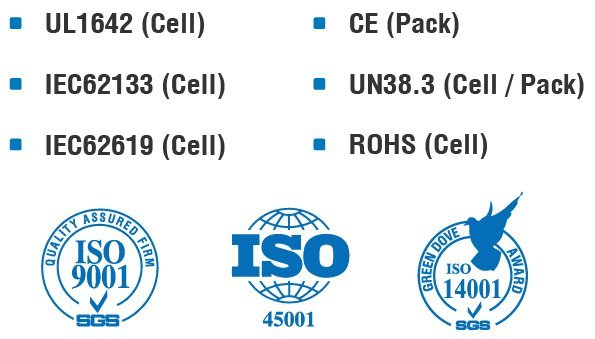
| UL1642(Cell) | IEC62619 (Cell) | UN38.3(Cell/ Pack) |
| IEC62133(Cell) | ROHS(Cell) | CE(Pack) |
Group 31 Battery Dimensions:

Internal Structure:
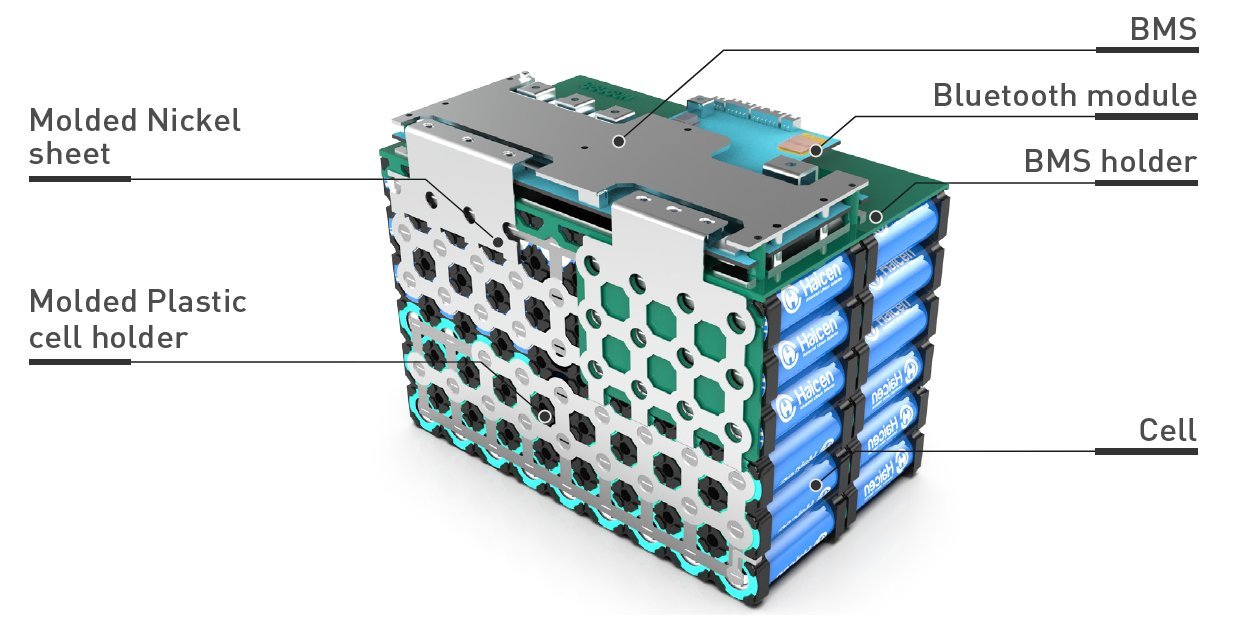
SOC Display (optional):
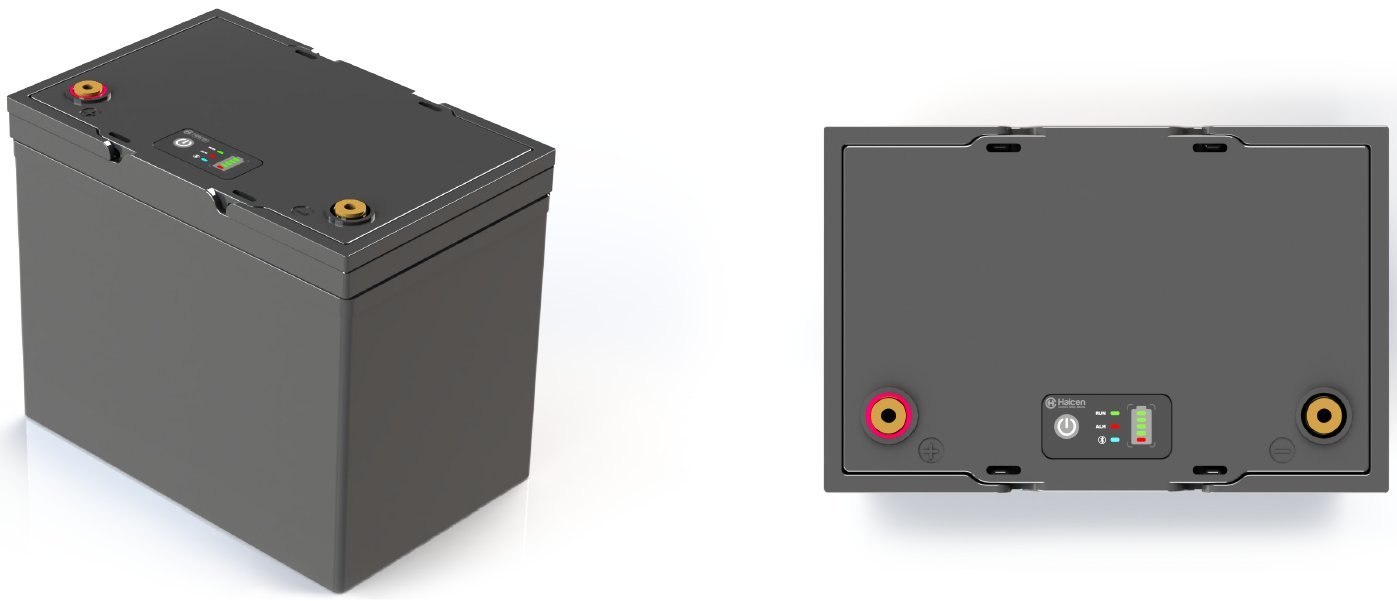
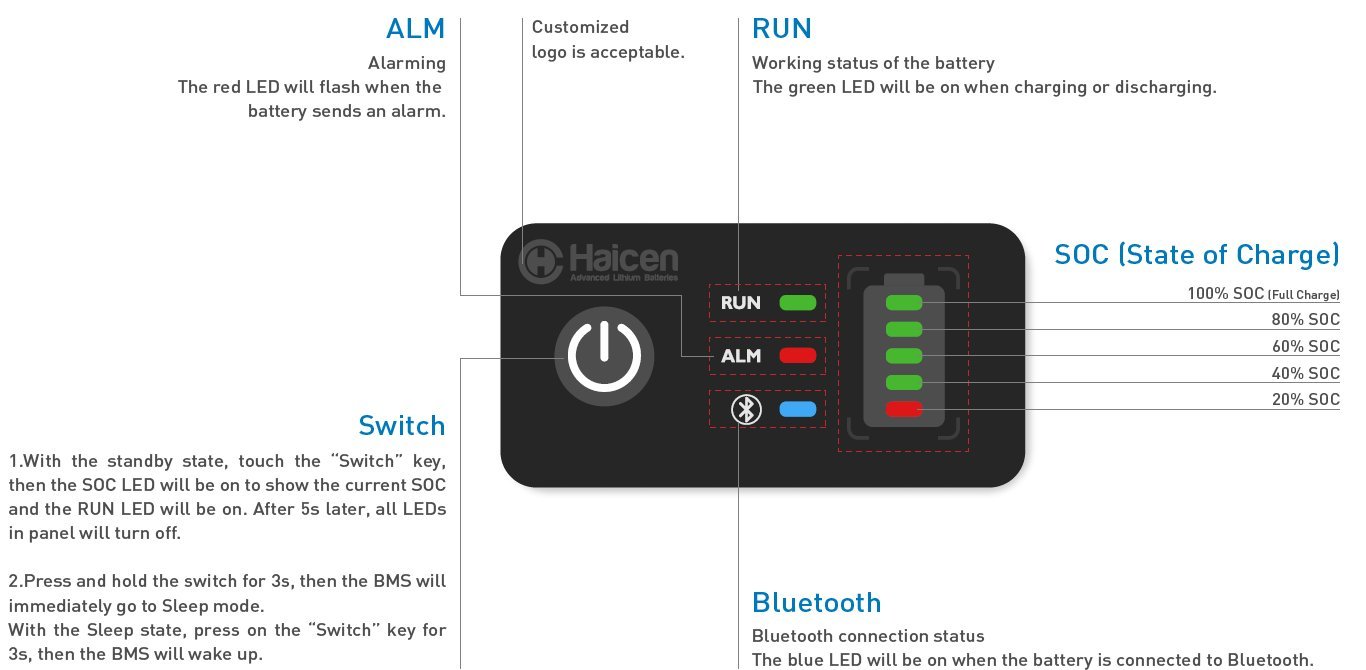
Characteristics Curve:
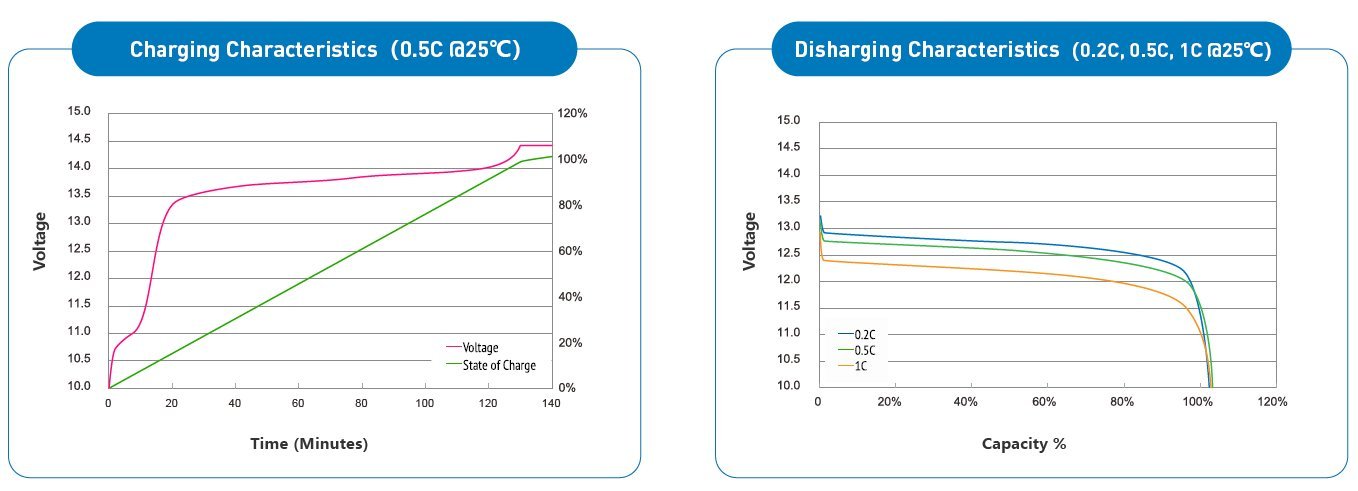
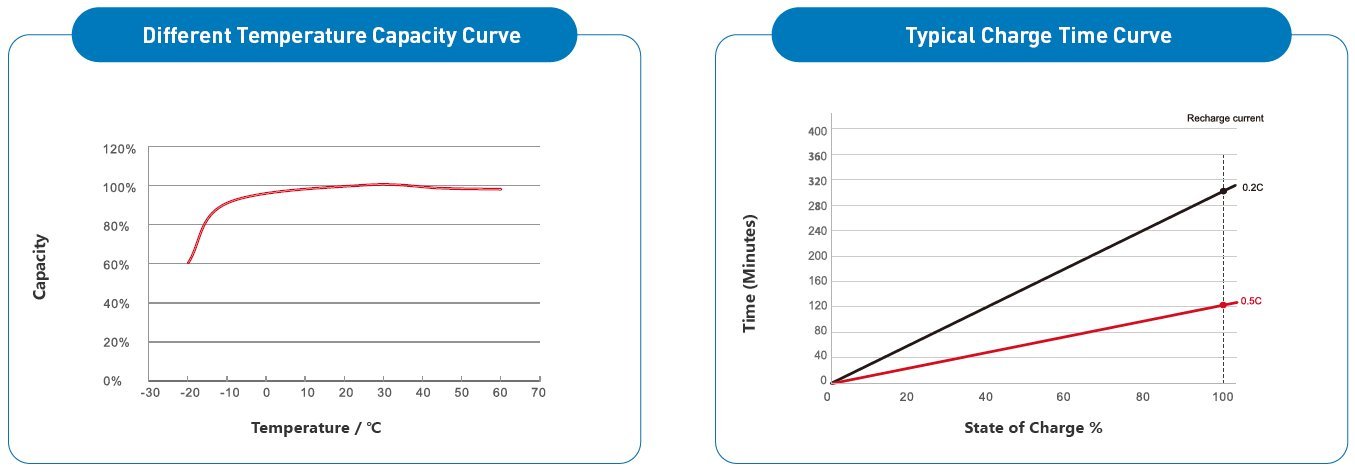
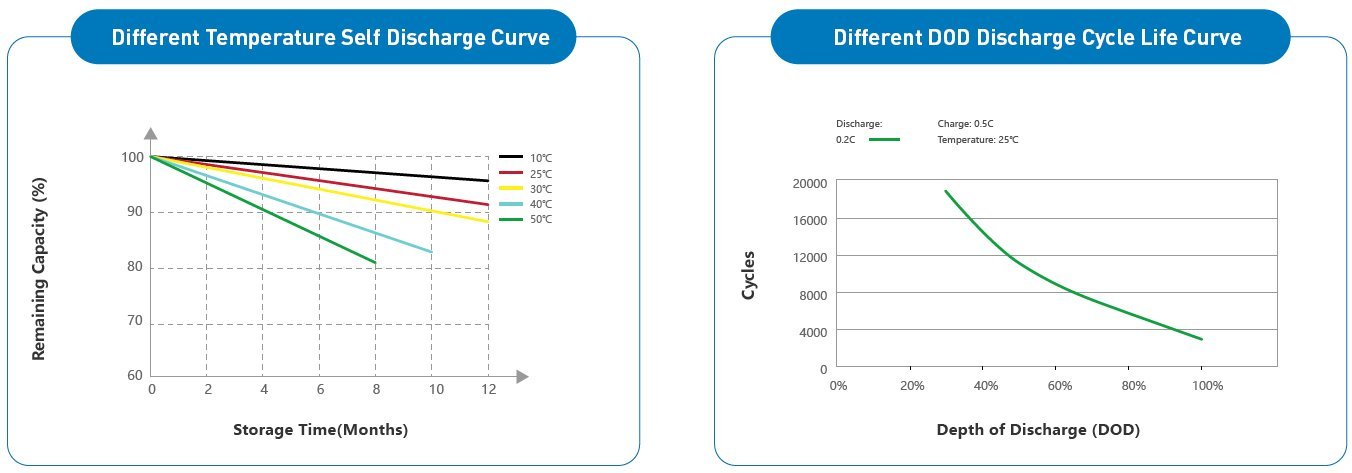
Ideal For: Full-time RVers and liveaboards, overlanding vehicles, commercial work trucks with onboard equipment, and as the primary storage for large off-grid solar systems.
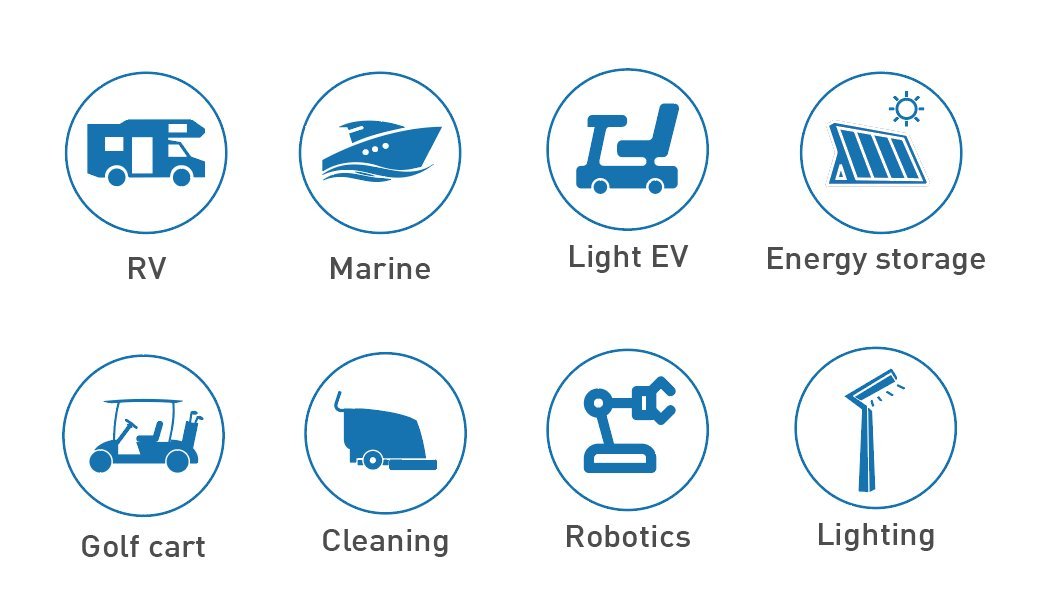
Customized items:
Case color: Customized case color is acceptable based on quantity more than 300pcs per batch.
Label design: We can help you to design customized label on the battery.
Carton design: Customized carton is acceptable based on quantity more than 200pcs per batch.
Certificates: 50% discount on certificates cost for first bulk order and 100% reback for future orders.
NDA agreement: NDA agreement is allowed and necessary to protect your benefits.
Demand More from Your Power. See if your compartment fits a Group 31 and unlock industrial-grade energy storage.
| TECH & SPECS | Model | |||||
| HCG31-12132 | HCG31-12150 | HCG31-12165 | HCG31-2480 | HCG31-4840 | ||
| Electrical Specifications | Nominal Voltage | 12.8V | 12.8V | 12.8V | 24V | 48V |
| Nominal Capacity | 132Ah | 150Ah | 165Ah | 80Ah | 40Ah | |
| Parallel Connection | Max. 6units | Max. 6units | Max. 6units | Max. 6units | Max. 6units | |
| Serial Connection | Max. 4units | Max. 4units | Max. 4units | Max. 2units | No | |
| BMS | 4S150A | 4S150A | 4S150A | 8S80A | 16S50A | |
| Circuit Protection | Over charge, Over discharge, Over current, Over temp, Short, Balance | |||||
| Cycle Life | 3000times Cycles @100%DOD and 6000times @80% DOD | |||||
| Self Discharge | Less than 3% per month | |||||
| Charge Efficiency | 100%@0.2C | |||||
| Discharge Efficiency | 98-100%@1C | |||||
| Charge Specifications | Charge Voltage | 14.4±0.2V | 14.4±0.2V | 14.4±0.2V | 28.8±0.4V | 57.6±0.8V |
| Standard Current | 26A | 30A | 33A | 16A | 8A | |
| Fast Current | 66A | 75A | 82A | 40A | 20A | |
| Discharge Specifications | Standard Current | 26A | 30A | 33A | 16A | 8A |
| Max. Con. Current | 132A | 150A | 150A | 80A | 40A | |
| Peak Current | 600A(300ms) | 600A(300ms) | 600A(300ms) | 400A(300ms) | 200A(300ms) | |
| Cut-off Voltage | 10V | 10V | 10V | 20V | 40V | |
| Mechanical Specifications | Dimensions (mm) | 330x173x216mm(Group 31) | ||||
| Approx Weight(KG] | 15 | 15.5 | 15.5 | 15 | 15 | |
| Terminal Type | M8 | |||||
| Case Color/material | Black Plastic case(ABS) | |||||
| IP Rating | IP65 | |||||
| Cell Type | Cylinder LiFePO4 cell | |||||
| Cell holder | Yes | |||||
| Temperature Specifications | Charge Temp | 0℃ to 55℃ (32℉to131℉) | ||||
| Discharge Temp | -20℃ to 60℃ (-4℉ to 140℉) | |||||
| Storage Temp | -5℃ to 45℃ (23℉ to 113℉) | |||||
A deep cycle battery is designed to provide sustained power over extended periods and can be discharged up to 80% of its capacity repeatedly without damage. Unlike automotive starter batteries (which deliver short, high-current bursts for engine ignition), deep cycle batteries prioritize deep discharges and recharges. They feature thicker plates and denser active material to withstand cycling stress, making them ideal for renewable energy, marine, RV, and industrial applications.
Recharge immediately after use to avoid prolonged states of partial or full discharge. Do not regularly discharge below 50% Depth of Discharge (DoD) for lead-acid types or 80% for LiFePO4 batteries. For optimal longevity, recharge when the battery reaches 50% capacity (lead-acid) or 20% (LiFePO4). Avoid storing the battery in a discharged state, as sulfation (lead-acid) or cell degradation (lithium) can occur.
Yes, they are commonly used in off-grid and hybrid solar systems due to their ability to handle daily charge/discharge cycles. LiFePO4 batteries are increasingly preferred for solar applications thanks to their higher DoD tolerance, faster charging, longer lifespan, and minimal maintenance compared to traditional lead-acid batteries. Ensure compatibility with solar charge controllers and system voltage requirements.